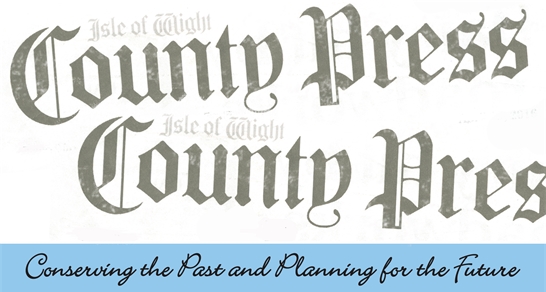March 2017
Bridges across the Valley
Driving around the Island we take bridges for granted, until they are closed for maintenance. Often this necessitates a long detour by car.
While we await the new Floating Bridge, west Cowes and East Cowes are ten miles apart if one needs to travel by car. The first steam driven chain ferry went into service in 1859. Before that, if a cart or carriage, or flock of sheep, needed to cross between the two towns, they would be loaded on to a barge. This would be winched across the river by means of a horse walking round and round a windlass. High level bridges have been considered, the last in the 1980s, but the cost of such a construction has always defeated the Council.
Freshwater is almost an island in its own right. The causeways by Freshwater church and at Blackbridge were the earliest crossing points of the western Yar. In 1858 the building began of long embankments out into the River Yar between Yarmouth and Norton. A wooden swing bridge was then constructed, opening in 1863. The present Yar bridge was built in 1987.
The Eastern Yar also has its causeway and bridge at Brading. Bembridge Isle was an island until Dutch engineers started work there trying, but failing to drain the marshes in the 1500s Later the Brading to Sandown railway ran beside the marshes, and the railway and river bridges were built. These are narrow and restricted for modern traffic, but a vital link for the people of east Wight. The threat of invasion in WWII led to the siting of a pill box sentry post on the causeway at Brading, still in place today.
The causeway across the Yar enclosing Brading Haven between St Helen’s and Bembridge was constructed in 1882 for the railway and a footpath, which was widened to be the present road.
Anther causeway, in very frequent use, is that at Wootton Bridge. Before it was built, all traffic had to pass inland through Havenstreet. The creek was dammed primarily to create a mill pond for Wootton Tide Mill, which was demolished in 1962. The bridge at Wootton creates a vital link for today’s traffic.
The coast of the Back of the Wight, between Chale and Freshwater, is dissected by several narrow deep valleys, known as chines. Soft rock has been carved by quite small streams. In the 1860s there was threat of invasion from the French. It was decided to construct a narrow road for the military to use to make it easy for troops to move rapidly along the coast. So the Chines had to be bridged, a fact that we forget as we drive rapidly along there today. At Grange Chine, a large brick bridge supports the road. The road itself was not a public road until 1936, after five years of labour to improve it.
These bridges all have to be maintained. Then they give us easy routes around the Island. We cannot take them for granted!
[Go Back]

